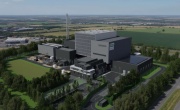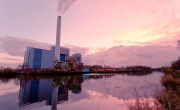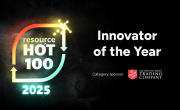Northern Ireland reports first 50 per cent quarterly recycling rate
Northern Ireland recorded a household recycling rate in excess of 50 per cent for the first time in the first quarter of 2017/18, according to the latest Waste Management Statistics published by the Department of Agriculture, Environment and Rural Affairs (DAERA).
According to the figures released last Thursday (26 October), Northern Ireland’s household waste recycling rate for April-June 2017 was 50 per cent. While not a 12-month rate, the figure represents a strong increase of 3.6 per cent from the recycling rate for April-June 2016 of 46.4 per cent. Typically, the period between July and October presents a further higher recycling rate due to the addition of summer garden waste, so DAERA will be hoping for more good news in a few months’ time.

Within last week’s figure, 0.2 per cent of collected household waste was sent for reuse (up from 0.1 per cent), 22.1 per cent was dry recycling (up from 21.7 per cent) and 27.8 per cent was sent for composting (up from 24.6 per cent).
Recycling rates varied between councils. Derry City & Strabane recorded the lowest recycling rate of 43.2 per cent, although this was an increase on the previous year’s 39.6 per cent, while the highest recycling rate was recorded by Mid Ulster, with 58.3 per cent, and increase of three per cent on last year’s figures.
The biggest increases in recycling rates were recorded by Mid & East Antrim (an increase of 7.2 per cent to 55.7 per cent), Mourne & Down (an increase of 5.5 per cent to 48.1 per cent) and the capital, Belfast (an increase of 4.7 per cent to 46 per cent).
Across Northern Ireland’s 11 local authorities, 263,167 tonnes of local authority collected (LAC) municipal waste was collected between April and June 2017, a slight increase on the previous year’s 262,883 tonnes, with household waste accounting for 89.2 per cent of total LAC municipal waste.
Newry, Mourne & Down produced the least amount of household waste per capita out of the 11 Northern Irish councils, generating 111kg per person, while Antrim & Newtownabbey managed to produce 147kg per person.
The amount of household waste to landfill fell to 32.2 per cent between April and June 2017, down from 37 per cent in the same period last year, while the LAC municipal waste recovery rate was 17.6 per cent, up from 16 per cent for the previous year.

Northern Ireland is split into three sets of waste management groups, which produce, develop and implement Waste Management Plans for their areas of responsibility. Six councils in the east of the country make up arc21, two in the north the North West Regional Waste Management Group (NWRWMG) and the remaining three belong to no waste management group.
The recycling rates for both arc21 and NWRWMG, which together make up around 75 per cent of Northern Ireland’s population were both lower than the national recycling level, at 49.9 per cent and 44.7 per cent respectively.
Commenting on the release of the figures, Philip McMurray, Head of Recycling Policy in DAERA, said: “I am delighted to see this improvement in recycling rates in the latest Northern Ireland recycling statistics and I am grateful to local councils and especially to householders for their continued efforts.
“However, we cannot be complacent. Recycling your food waste can seem strange at first but for most people it soon becomes second nature. And yet such a simple change can make a huge difference. Keeping food waste out of landfill not only helps prevent climate change, but the waste can be turned into a valuable resource for our parks and allotments and the process has already created jobs.”
DAERA's full statistics release for April-June 2016 can be found on the department's website.








